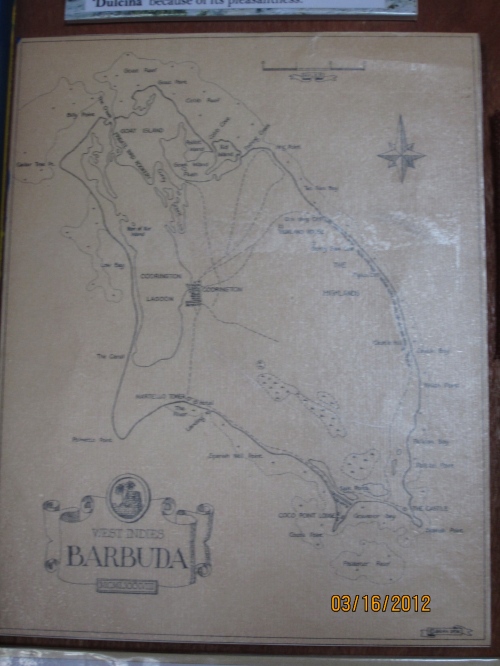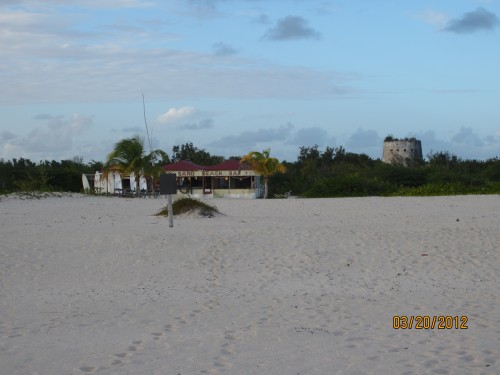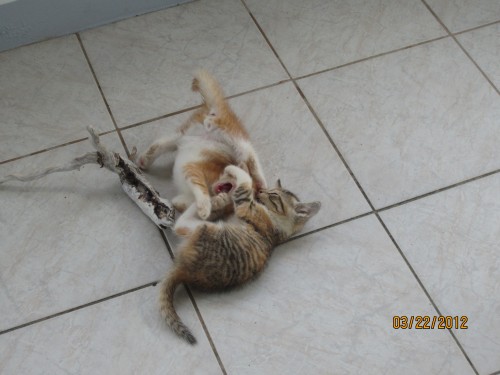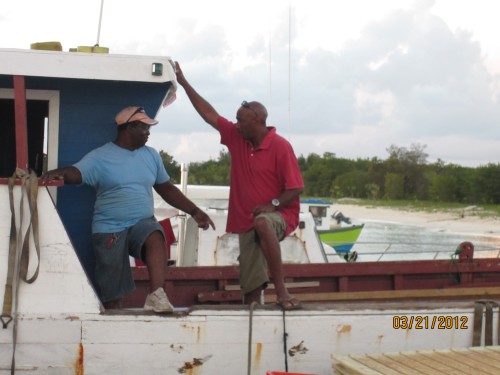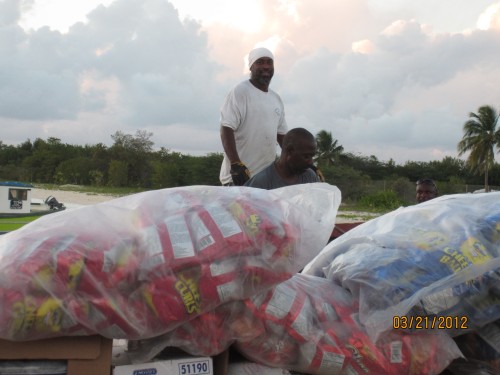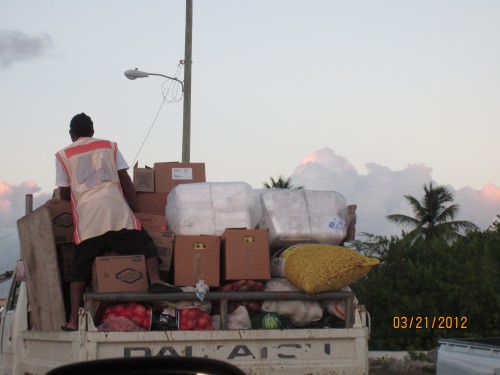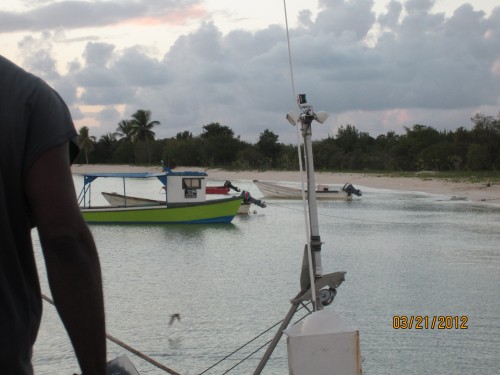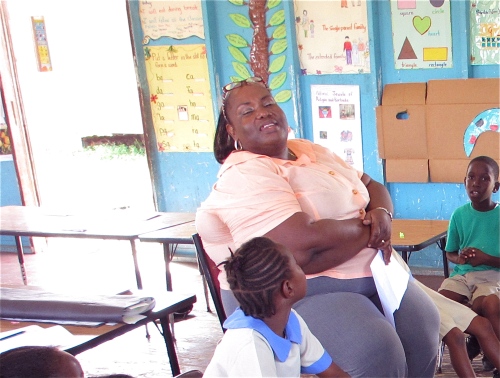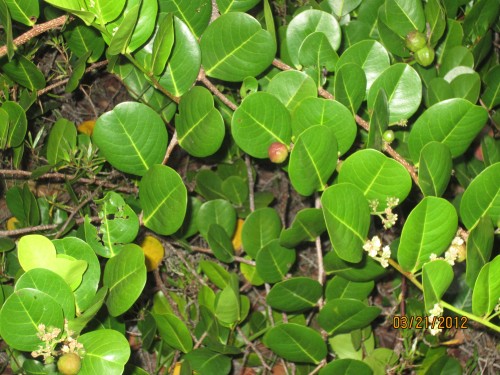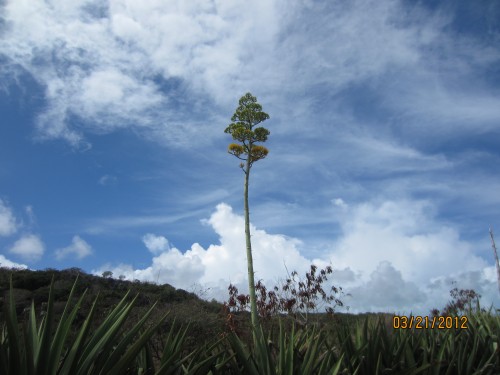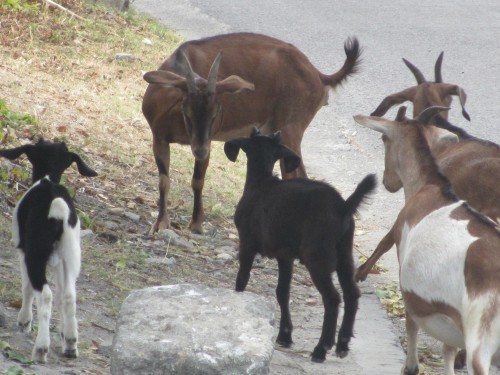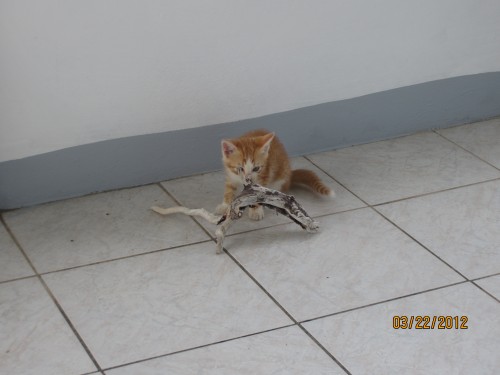As Pat was starting to pack her things and set off for home, we took at look at some of the pictures from Barbuda. We were amazed to realize how much we learned about the island during out stay that is not in the tourist books and materials. So, if you are planning on visiting Barbuda, here is some advice.
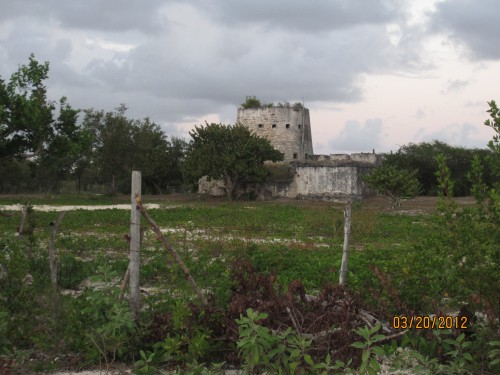
The Martello Tower...you can walk up the tower and on a good day get a nice view Antigua. Because Barbuda is so flat, the Antiguans can not see Barbuda.
Speaking of views, make sure that you visit the Martello Tower…this is near Pink Sand Beach and Restaurant Bar. Well, actually this one is listed in one of the tour books. We thought the Martello Tower might be a sugar mill, but actually it was used as a lookout tower for pirates. Apparently you can climb the tower and get a good views of the beaches on the Caribbean side of the island.
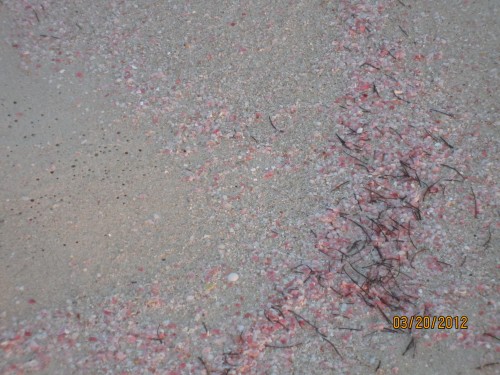
The pink in the sand is due to an algae of some sort that causes the pink color. It is more pronounced in the summer, during August. Here is a picture of the pink sand in March. It must be amazing to see in the late summer.
Pink Sand Beach is right next to the tower. The beach is beautiful; the sand is very pink in August and a little pink in March.
Before we left the island, Francene gave us each a bag of pink sand. Pat came away with a wonderful piece of driftwood from the beach.
If you look carefully, you will see the driftwood that Pat found, being enjoyed by two of the three kittens at Cerene’s cottages, where we stayed. They had such fun with it, that we left the driftwood for the little kittens… we couldn’t think to take away their new toy. The kittens were adorable and we loved seeing them in the morning. While we were there they discovered each other’s tails. It was hilarious to watch them together.
There is a huge sand refinery on Barbuda that brings sand from the Atlantic side of the island to the eastern side of the island for exporting to Antigua. The sand will be used to make cement. It is shipped at the River Wharf.
The River Wharf is also used daily for importing to Barbuda anything that is needed that comes in a package, as well as many foodstuffs. Small farmers dot the island, but not enough to supply fresh fruit and vegetables to the people who live there. There is too little rain to support large-scale farming.
Until some type of irrigation system is built, Barbudans rely on Antigua and other islands for many of their daily living items. Fortunately supplies are shipped in almost daily.
In Barbuda the land is not for sale…the government owns it. However, Barbudans may build on any land not already taken. They register the property with the government and as long as they have built a foundation they have rights to the land. As a result there are many unfinished homes in Barbuda. The Barbudans are proud about not borrowing from the bank. When someone has the money to build a foundation, they stake claim to the land on which they will build and build it, with the help of their many neighbors and friends. When they run out of money, they stop working and save up additional money for the next phase of the project. When that money is gone, they stop building and start saving again.
One day, Paula, a first grade teacher at Holy Trinity took us to Uncle Roddy’s Beach. It was a beautiful beach. Paula told us that many of her relatives (probably most of the island, since she is one of 11 children) spend many weekends in the summer camping in the eastern side of the island. There they “live off the land,” hunting wild boar and fallow deer, catching turtles and fish.
Paula introduced us to the cocoa plum. Unfortunately the plums she gave us were not quite ripe. We quickly learned not to eat this fruit until it is ripe. Here I am recovering from my first bite!
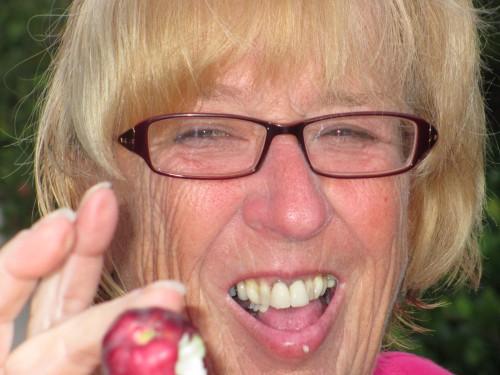
I can't really describe the taste of the unripened fruit..it made your mouth and tongue instantly dry.
She took us to see two large tamarind trees, which are named (but Pat and I couldn’t remember their names).
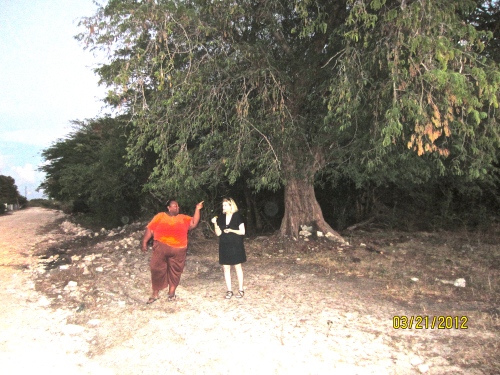
Paula explains the history of the two tamarind trees. She urges us to try the tamarind fruit. The fruit is used in many of the local recipes.
Paula had us try the tamarind fruit. Was it sour? Whew! Pat suggested that one may want to merely lick the fruit, rather than bite into it. I bit into it. Pat was correct.
We saw many beautiful flowers and trees in Barbuda. The national flower is the agave plant. This plant blooms once every 10 to 20 years. We saw many of these plants starting to blossom in Barbuda. After the bloom dies, the stalk is used for building a type of fishing boat used in inland waters, as the stalk floats.
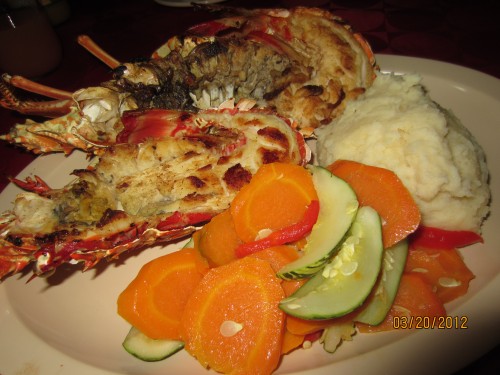
The lobster was delicious, but I have to admit that I prefer the lobsters we get at Cape Cod and Maine in the USA. The Barbuda lobster does not have the big claws...the best part of the lobster, if you ask me. However, Cerene did an awesome job on this meal and it was delicious.
We were fortunate to taste the Barbudan lobster. We did most of our eating at Celene’s restaurant. Celene also runs a bakery. The breads she bakes were delicious and many of the locals stop there in the morning to get their sandwiches for lunch.
One of the most important things we learned on Barbuda was the difference between a goat and a sheep. A sheep has a longer tail than a goat, and a goat’s tail sticks up. Oh no, I better go back to some of my goat stories on this blog…they may actually be sheep!
Our trip to Barbuda was filled with wonderful experiences; we were fortunate to have many guides to help us enjoy our stay: Devon and his brother drove us around the island to many of the beaches we enjoyed; Paula Henry, first grade teacher from Holy Trinity introduced us to Uncle Roddy, the wharf gang, cocoa plum and tamarind. We want to thank the students and all the teachers and staff, especially Francene Headley and Mrs. Harris, at Holy Trinity Primary School on Barbuda for making our visit memorable. We’ll be back!

